11 Jul 2023
2023 Summer Dig - Day 3
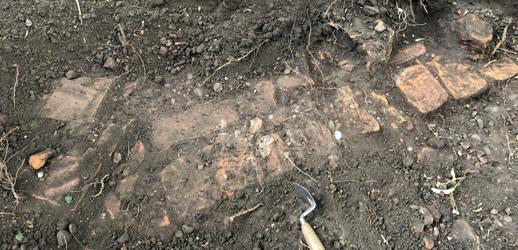
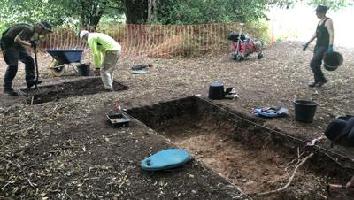
Spirits rose this afternoon on day three of our two-week dig on the site of Elsyng Palace in the grounds of Forty Hall, as we finally uncovered in-situ structural remains of the palace - the first new structural archaeology that we've seen since 2019.
For the past few years we've been hunting for remains of the palace's inner gatehouse - a multi-story building that joined the palace's inner and outer courtyards, and after finding only demolition and possible moat cuts, we've been gradually pushing our search westwards into the woodland to the west of Forty Hall's lime tree avenue.
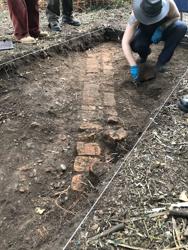
Trench two, which is located atop a conspicuous mound or platform in the woods, contained a widespread dump of demolition rubble, which we have now mostly removed to reveal a mostly brickearth context with no obvious signs of structure, but this morning we did tentatively identify a possible cut feature at the trench's western end.
To examine this further, we opened a small trench (Trench 4) just beyond the western end of Trench 2 roughly in line of where the possible cut would have run. Almost immediately upon removing the topsoil, however, we were delighted to find a Tudor wall just a few centimetres below ground level, running at an angle across the corner of the small trench.
We therefore immediately extended the trench to uncover more of the wall and have so far revealed a stretch of about two metres, relatively well preserved but not of the highest quality brickwork.
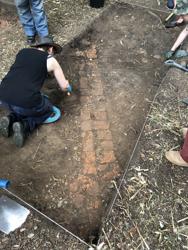
The wall is obviously far too thin to be our elusive gatehouse, or at least not a major structural element of it - it could possibly be an internal partition wall within the gatehouse or else part of a much less substantial building.
Either way, this is a new, previously unknown part of the palace and will likely become the main focus of the dig. We don't currently know how far it extends in either direction and it looks as though it thickens in the north-west corner of the trench, perhaps because it turns a corner.
One of our first jobs tomorrow will probably be to further extend Trench 4 to reveal more of the wall and find out if it does turn, and also to begin to excavate either side of it to see whether there are surviving internal floors.
Meanwhile in Trenches one and three, digging continued with less dramatic results but with a few nice finds.
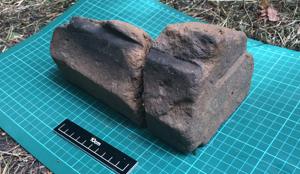
Trench one, which is located with the hope of finding the inner side of what we think may be the cut of a moat, does seem to be revealing a very uneven and sloping surface much where we expected it.
Amongst the rubble fill of the cut we found two quite large joining lumps of carved stone, which once formed part of a palace window. The stones are partly discoloured with soot, most likely from a demolition bonfire, and one end bears deep scars from the 17th century pick-axe which prized it from its location.
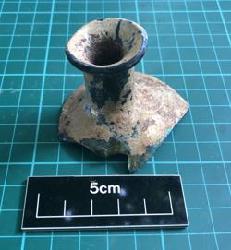
Excavation in Trench 3 continued at a relatively slower pace and has not yet found traces either of the moat cut or of the building range of the outer courtyard, but did produce a couple of nice glass small finds including the surprisingly well preserved neck of a case-bottle - so called because it was blown inside a case, which would have given its body a distinctive square shape. What it once contained we can only guess!